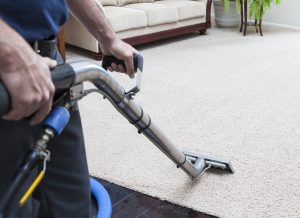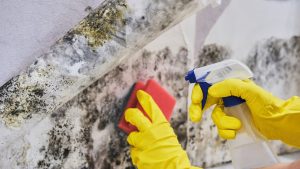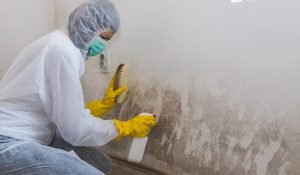
Mould is a common issue in many homes, often lurking in damp, hidden corners.
It’s not just an unsightly problem. Mould can cause serious health issues and damage to your property.
Understanding the causes of mould growth is the first step towards effective remediation. This article aims to provide you with that knowledge.
We’ll delve into the science of mould, identifying common causes in homes. We’ll also discuss the role of humidity, temperature, water leaks, and poor ventilation in mould development.
Furthermore, we’ll guide you through the mould remediation process, comparing DIY and professional mould removal. We’ll also provide tips on finding the right mould removal service in Sydney.
By the end of this guide, you’ll be equipped with the knowledge to prevent mould growth and choose effective remediation solutions.
The Science of Mould: What Causes Mould to Grow?
Mould is a type of fungus that thrives in damp, warm, and humid environments.
It reproduces by releasing microscopic spores into the air. These spores can enter homes through windows, doors, or HVAC systems.
Once inside, they can grow on various surfaces, especially those that are moist.
Common sites for mould growth include bathrooms, kitchens, basements, and areas with water damage.
Mould growth is not just a cosmetic issue. It can cause various health problems, especially for those with allergies or compromised immune systems.
Symptoms of mould exposure can include coughing, sneezing, throat irritation, and skin rashes.
Understanding the causes of mould growth is crucial for effective prevention and remediation.
Here are some common causes of mould growth:
- High humidity
- Water leaks
- Condensation
- Poor ventilation
Identifying Common Mould Growth Causes in Homes
High humidity is a common cause of mould growth in homes.
This is especially true in areas like bathrooms and kitchens, where steam from showers and cooking can increase moisture levels.
Water leaks, whether from a roof, plumbing, or appliances, can also lead to mould growth.
Condensation, often seen on windows or walls, can provide the moisture mould needs to grow.
Poor ventilation can trap moist air inside, creating a perfect environment for mould.
It’s important to regularly check these areas and conditions in your home to prevent mould growth.
Addressing these issues promptly can help prevent a small mould problem from becoming a major infestation.
The Role of Humidity and Temperature in Mould Development
Humidity and temperature play a significant role in mould development.
Mould thrives in humid conditions, typically when relative humidity is above 60%.
Temperature also affects mould growth. Mould prefers warm temperatures, typically between 20 and 30 degrees Celsius.
However, some types of mould can grow in cooler or hotter conditions.
Understanding these factors can help you create an environment less conducive to mould growth.
Water Leaks and Flooding: A Breeding Ground for Mould
Water leaks and flooding can quickly lead to mould growth.
This is because mould spores need moisture to grow and reproduce.
Even a small leak can provide enough moisture for mould to thrive.
Flooding can cause extensive mould growth, especially if not properly cleaned and dried.
It’s crucial to fix leaks and dry out flooded areas as soon as possible to prevent mould growth.
Poor Ventilation and Its Contribution to Mould Issues
Poor ventilation can contribute to mould growth by trapping moist air inside.
This is especially true in areas like bathrooms and kitchens, where steam can build up.
Without proper ventilation, this moist air has nowhere to go, creating a perfect environment for mould.
Ensuring good ventilation can help reduce humidity levels and prevent mould growth.
Remember, prevention is always better than remediation when it comes to mould.
Mould Remediation: Understanding the Process
Mould remediation involves assessing the extent of mould growth and determining the appropriate response.
This process often starts with a thorough inspection to identify all areas of mould growth.
Next, the area is contained to prevent the spread of mould spores during the remediation process.
Specialized equipment is then used to remove the mould and clean the affected area.
Finally, the area is dried and restored to its original condition, ensuring that the environment is safe and mould-free.
DIY vs. Professional Mould Removal: What You Need to Know
DIY mould removal may be suitable for small areas of mould growth.
However, for larger infestations, professional remediation is recommended.
This is because professional mould removal services have the necessary equipment and expertise to effectively remove mould.
They also follow strict safety protocols to protect themselves and prevent the spread of mould spores.
Remember, improper mould removal can lead to cross-contamination and exacerbate the problem.
Mould Removal Sydney: Finding the Right Service Provider
When looking for a mould removal service in Sydney, it’s important to choose a reputable company.
Look for a company that is certified and follows industry standards for mould remediation.
Reviews and testimonials can provide valuable insights into the quality of a company’s services.
Also, consider the company’s transparency in the remediation process and their guarantees or warranties.
Remember, effective mould remediation is not just about removing the mould, but also addressing the underlying causes to prevent recurrence.
Preventing Mould Growth: Tips and Strategies
Preventing mould growth involves controlling humidity levels, fixing leaks, and ensuring proper ventilation.
The use of dehumidifiers and air purifiers can help maintain an environment less conducive to mould growth.
Regular cleaning and maintenance of HVAC systems are also crucial in preventing mould.
Here are some additional tips for preventing mould growth:
- Regularly inspect your home for leaks and fix them promptly.
- Ensure your home is well-ventilated, especially in areas like the bathroom and kitchen.
- Use mould-resistant paint and building materials in new constructions or renovations.
- Regularly clean and dry wet areas, like the bathroom and kitchen, to prevent mould growth.
Remember, prevention is always better than cure when it comes to mould growth.
Conclusion and Call to Action
Understanding the causes of mould growth is the first step towards effective remediation.
Professional mould removal services in Sydney offer comprehensive solutions to tackle mould issues.
Remember, mould growth can cause health issues and damage to your property.
Don’t wait until it’s too late. If you suspect a mould issue in your home, seek professional help immediately.
Take action today to ensure a healthy and mould-free living environment.



